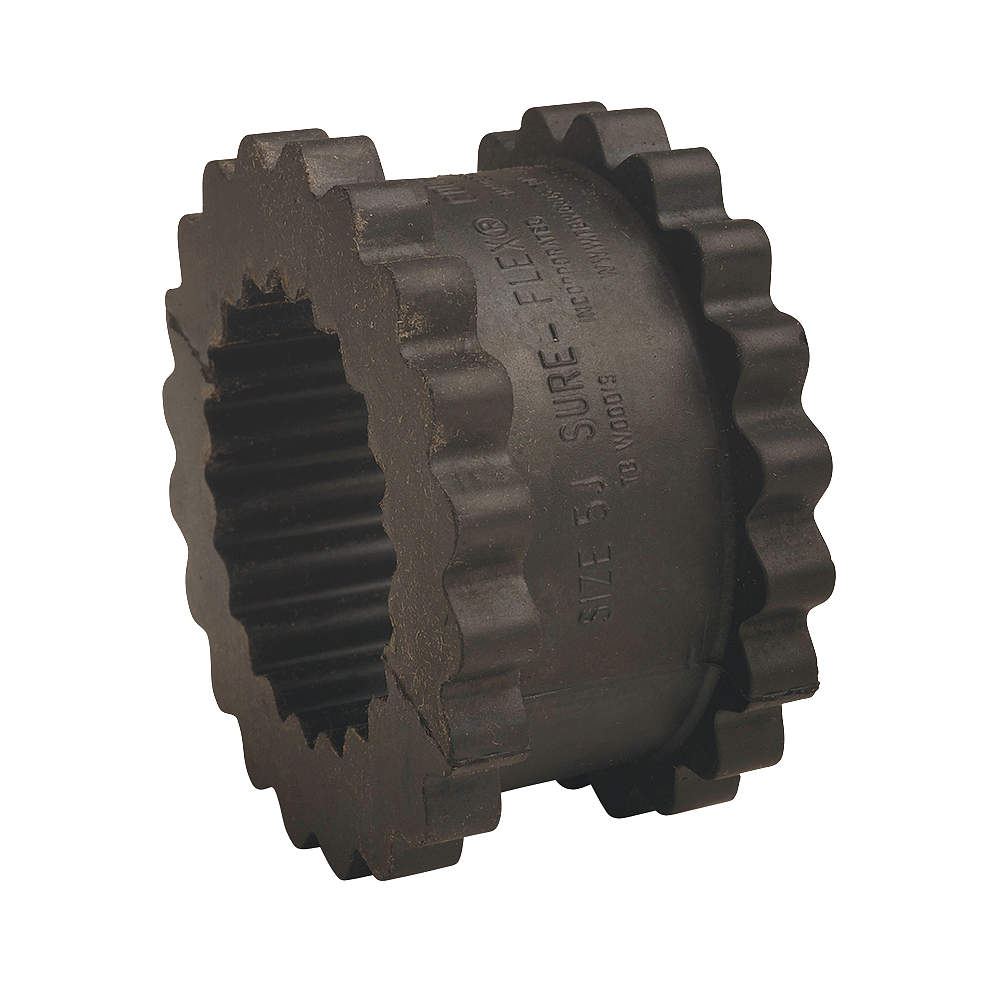TB Woods 4J coupling sleeve insert is ideal for efficient and reliable connection between two rotating shafts protecting equipment from vibration, shock misalignment and end float. It is suitable for use with blowers, conveyors, motors, compressors, mixers & pumps and eliminates the need for maintenance and lubrication of the equipment.
Features:
- TB Woods 4J coupling sleeve insert has an EPDM body for resisting grease, oil and dirt.
- It features 4-way flexing action that absorbs all shock, misalignment and end float types.
- This sleeve insert has a one-piece solid design, ensuring sturdy and robust construction and enhancing longevity and reliability.
- It is designed to operate at a maximum speed of 7600 RPM and a rated torque of 156 lb-inches.
Frequently Asked Questions:
Q. How to install TB Woods 4J coupling sleeve insert?
A.
- Thoroughly examine all coupling components and eliminate any protective coatings, lubricants, paint or rust from bores, mating surfaces and fasteners. Ensure that shafts are free from any existing burrs or imperfections.
- Employ keys as necessary and slide one hub onto each shaft. If utilising QD or Taper-Lock hubs, adhere to the instructions provided with the Sure-Grip or Taper-Lock bushings.
- For spacer coupling use high-speed rings and loosely install one ring on each half element.
- Position one-half element on the hubs to determine the appropriate spacing of the hub. If employing spacer elements with high-speed rings, hold both half elements on the hubs to confirm that the rings do not encounter any interference.
- Securely but lightly fasten hubs to shafts to prevent movement during alignment procedures.
- Without rotating the coupling, employ a calliper to measure the widest point around the hub. Adjust the calliper to the narrowest point and reposition the equipment until this value is minimised.
- Utilising the misalignment value obtained in the previous step, consult the maximum allowable parallel misalignment. Without rotating the shaft, utilise a straight edge around the hub and determine the maximum offset using feeler gauges. If necessary, readjust the shafts and recheck parallel alignment.
- Tighten fasteners on the motor and drive equipment according to the manufacturer's specifications. Recheck both parallel and angular alignment.
- Once the parallel and angular alignment values fall within the service ratings, ensure that all set screws, cap screws and other fasteners are securely tightened as specified. Recheck both parallel and angular alignments after tightening.
- Install the coupling guard as per relevant safety regulations.
- Periodically inspect the alignment, as settling can often cause changes in equipment position.
Q. What is the operating temperature of this coupling sleeve insert?
A. This coupling insert has an operating temperature range of -30 to 275 degrees F.
 Change Country
Change Country

